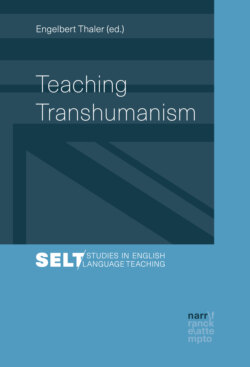Читать книгу Teaching Transhumanism - Группа авторов - Страница 6
На сайте Литреса книга снята с продажи.
1. Terminology
ОглавлениеGiven the multitude of different directions, it is not surprising that we face almost as many definitions as there are people writing about the subject. There is no generally valid definition of transhumanism (Latin “trans”: ‘beyond’, and “humanus”: ‘humane’). Max More (1990) offers the following definition:
Transhumanism shares many elements of humanism, including a respect for reason and science, a commitment to progress, and a valuing of human (or transhuman) existence in this life rather than in some supernatural ‘afterlife’. Transhumanism differs from humanism in recognizing and anticipating the radical alterations in the nature and possibilities of our lives resulting from various sciences and technologies such as neuroscience and neuropharmacology, life extension, nanotechnology, artificial ultraintelligence, and space habitation, combined with a rational philosophy and value system.
In nuce: Transhumanism represents a line of thought that seeks to expand the limits of human possibilities by using various technological procedures. The evolution of life has promoted the development of higher and higher species – and probably did not end with man.
“Human is a step in evolution,
not the culmination.”
(Nikola Danaylov)
In the past, nature has brought forth new species, but today man has so much scientific and technical skill that we can consciously create new species.
Through conscious self-evolution, humans may perhaps transform themselves into higher beings who are physically, intellectually, ethically, culturally, aesthetically and emotionally much higher than they are today – as far above us humans as we are above the monkey:
from
Trans-Chimpanzees
to
Trans-Humans
The conceptual heterogeneity, on the one hand, results from the multitude of disciplines involved (biology and philosophy, cybernetics and artificial intelligence, political science and literary studies, nanotechnology and complexity theory, etc.), and, on the other hand, from the overlap with the concept of posthumanism. “We need to understand that five hundred years of humanism may be coming to an end, as humanism transforms itself into something that we must helplessly call posthumanism” (Hassan 1977: 843). Posthumanists (cf. i.a. Nayar 2014) deny the classical humanist paradigm, “in which an ideal human Self/Subject stands at the center of creation and commands all that is not made in … ‘His’ image” (Csicsery-Ronay 1999: 313), reject a human exceptionality (Snaza et al. 2014) and demand the decentering of the human being.
This implies a fundamental egalitarianism, which starts from a single matter, postulates an equality of all life and abolishes traditional binary oppositions (Braidotti 2014). That is why opposites such as nature – artificiality, body – spirit, material – virtual, organic – mechanical, human – animal are obsolete.
To further increase the terminological confusion, the affixes post- and trans- as well as super-, meta-, hyper- or anti- appear as prefixes of humanism. Although posthumanism is the most popular term, this “post” (‘after’) evokes either the departure from humanity and the paradoxical notion that man has the will and the power to proclaim his end, or associations with ‘against / anti’. Transhumanism seems to be a more appropriate term, because it is more neutral in value, not reminiscent of ‘after’ or ‘anti’, something that lies beyond common notions of the human being and does not have to be limited to technological innovations.
